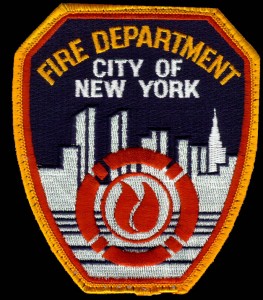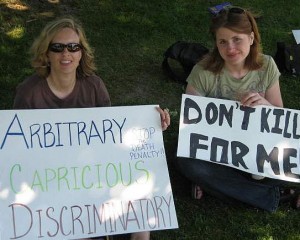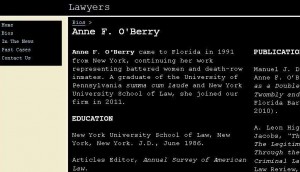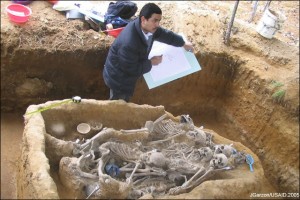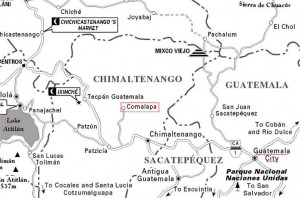Podcast: Play in new window | Download
Updates:
- Lynne Stewart Compassionate Release Petition
- Please Also Write to: Charles E Samuels Jr. / Federal Bureau of Prisons /
- 320 1st Street Northwest / Washington DC 20534
——
Court Upholds Broad Injunction to Remedy FDNY Discrimination
We talk today about recent developments in the New York City Fire Department discrimination case known as the US and Vulcan Society v. City of New York. Last week, a three-judge panel of the Second Circuit Court of Appeals held that, in light of the City’s “distressing pattern of limited FDNY minority hiring,” broad relief ordered by the district judge to end discrimination in the FDNY was “entirely warranted.”
This decision includes an independent monitor in order to “oversee the FDNY’s long awaited progress toward ending discrimination.” The Court also ruled that the plaintiffs’ intentional discrimination claim should proceed to a trial. The district court had found that the evidence of intentional discrimination was so overwhelming that no trial was necessary. The Court of Appeals also reinstated the plaintiffs’ claim that former FDNY Commissioner Nicholas Scoppetta is individually liable for intentional discrimination.
- The Vulcan Society which is our client, a fraternity of black fire fighters sued the city of New York and said that the reason why the fire department back in the 60s and 70s was virtually all white was because of the hiring process that the city was using, it was discriminatory, it was unlawful.
- A federal judge agreed back in 1973 and ordered the city to hire one minority firefighter for every 3 white firefighters that was hired.
- Decades went on, we get up to the 90s and you look at the FDNY and it’s still 3 percent African American.
- It instituted the quota that was required for the bare minimum amount of time that was required and then it reverted to the all white club that the fire department has been its entire history in New York City.
- In a city that is 25 percent African American or more and 25 percent Latino.
- We made the case that not only was the city using these exams but they were continuing to use them with the knowledge and intent to perpetuate the fire department as it has existed.
- So that fathers could bring their sons and their nephews into the force and it would stay the way it had always been which is virtually all white, more than 90 percent white.
- The District Court Judge in Brooklyn agreed with us he said this was clearly intentional discrimination. He issued a remedial order requiring broad oversight of the FDNY hiring process.
- The city didn’t like that, they appealed to the Court of Appeals. The Court of Appeals came down with a decision that largely upheld this very broad and deep oversight on everything the city does to hire firefighters.
- Every other fire department in a big city across the country is more racially diverse than in New York City.
- Back in the 80s women came into the fire department and face horrible harassment and retaliation.
- One of the things we learned is that fire fighting is less dangerous than construction work, its far less dangerous job than being a police officer, a roofer.
- Fire fighters are revered wherever they go and the job is much much more safe than sanitation work.
Guest – Attorney Dana Lossia (Northwestern University, B.A., summa cum laude 2001, Harvard Law School, J.D., 2005) joined Levy Ratner in December 2005. She represents unions in New York and New Jersey in arbitrations, administrative proceedings, NLRB cases and federal and state court litigation. She also represents plaintiffs in complex employment discrimination actions, including a challenge to racially discriminatory hiring practices at the NYC Fire Department. Lossia has also litigated on behalf of tenants in land use and zoning appeals before the NYC Board of Standards and Appeals.
—-
Lawyers You’ll Like: Anne O’Berry
As part of our Lawyers You’ll Like series we’re joined by attorney Anne O’Berry, she’s the Vice President of the Southern Region of the National Lawyers Guild and the author of The Law Only As An Enemy: The Legitimization of Racial Powerlessness Through the Colonial and Antebellum Criminal Laws of Virginia. While in law school, she served as Director of the Women in Prison Project at Rikers Island, where she taught incarcerated women how to prevent termination of their parental rights. In the last 12 years, Anne has served as counsel at a Florida law firm that specializes in class action litigation, particularly in the areas of securities, consumer and economic fraud, as well as some environmental and privacy rights litigation.
- We did a lot of historical research in terms of racism and the law back in pre-civil war Virginia.
- We focused on Virginia because it was a paradigm for slavery basically in the slave laws that were in place.
- We wrote an article for publication, it was published in the University of North Carolina law review. The Law Only As An Enemy:’ The Legitimization of Racial Powerlessness Through the Colonial and Antebellum Criminal Laws of Virginia.
- Depending on your status, if you were a free white person or a slave, you were treated differently by the law.
- As an overall theme, depending on the race of the victim was that would effect what your sentence would be.
- For example, if a black woman was raped, that was not considered a crime. If you were a black person and you stole something, you would be put to death.
- It was ironic for the slave owner because if their slave was put to death, they would have to be compensated by the state.
- If the victim was black, the crime was treated less seriously than if the victim was white.
- I started out working at a firm in New York, a large prominent, Wall Street type.
- Among some people I was known as the pro-bono queen.
- I was there for 2 and a half years and the first pro-bono case was a death penalty case.
- The court ruled back then (1990s) that it was ok to execute the mentally retarded.
- I was so moved by that experience that I gave up my cushy job in New York and go do death penalty work full time.
- I ended up at the Federal Resource Center doing death penalty work in Tallahassee Florida.
- I worked for the Battered Women’s Clemency Project in Florida.
- More recently the Supreme Court did rule that it is unconstitutional to execute people who were juveniles at the time of the offense and unconstitutional to execute people who are mentally retarded.
- I believe in my lifetime we will see the end of the death penalty in this country.
- It’s just an amazing system that we have where the courts will say – yes you’ve got compelling evidence of innocence but we’re not going to hear your case.
- I would say what got me through was the victories.
- Presently, I’m working with an attorney Jim Green, who’s a prominent civil rights attorney in West Palm Beach, kind of a legend down here.
- I also some volunteer work with El Sol. It’s a day laborer center in Jupiter, Florida.
Guest – Anne O’Berry, National Lawyers Guild’s Regional Vice President for the Southern Region and a member of the Guild’s South Florida chapter. She obtained her undergraduate degree from the University of Pennsylvania in 1983 and her law degree from New York University Law School in 1986. While in law school, she served as Director of the Women in Prison Project at Rikers Island, where she taught incarcerated women how to prevent termination of their parental rights. She was a member of the law school’s civil rights clinic and an editor on one of the law school’s journals, and authored a law review article on prisoners’ rights.
—
Guatemalan Ex Dictator Found Guilty of Genocide
After weeks of powerful testimony the trial of former Guatemalan dictator Efraín Ríos Montt and his intelligence chief José Rodríguez Sánchez ended with a guilty conviction on charges of genocide and crimes against humanity. The verdict marked the first time a former head of state had been found guilty of genocide in his or her own country.The government’s lead prosecutor, Orlando López, gave more than two hours of summation based heavily on the Guatemalan military plans, manuals, and operational records entered as evidence. During the months of General Ríos Montt’s rule, the army used a scorched-earth policy to flush out leftist guerrillas fighting in the hills. The villages of the Mayan highlands suffered the worst of the army’s brutality in the early 1980s, during Guatemala’s 36-year civil war.
- I’m one of a couple of analysts that look at foreign policy in Latin America. My specialty is Central America and Mexico and I’m the director of something called the Evidence Project at the Archive, which is a way of connecting the right to information, right the truth with human rights and justice struggles around the region.
- We’ve worked very closely with truth commissions, with prosecutors and judges to try to get some of the classified US documents and sometimes even the national documents from their countries in to their hands when they’ve got a human rights investigation underway.
- The impetus for this case really came from the affected communities themselves that is in this case, the community of the Mayan Ixil.
- In the Northwestern part of the country, which worked for decades to identify exhumation sites. Sites where they knew there were clandestine mass graves of their own mothers, fathers, children who had massacred during the scorched earth operations of Rios Montt in 1982 and 1983.
- In March of 1982, Rios Montt headed a trio of military officers that overthrew the previous president. There was a guerrilla armed insurgency underway in Guatemala and had been since the 1960s. Rios Montt decided he was going to launch a series of counterinsurgency operations not only to target the armed insurgents in the highlands but also to destroy or eliminate their social base.
- That meant going after communities of mostly Mayan peoples that lived in the same area where the insurgents operated. It’s one of the most brutal acts of what used to be called low intensity warfare.
- The officials that carried out those operations were left to enjoy total impunity after the regime ended some 17 months later.
- Prosecutors and both the government prosecutors and civil prosecutors who represent the victims who also get to sit at the table ask questions and participate in the investigation pulled together a real interesting case for genocide and crimes against humanity.
- I’ve been working with those prosecutors for years to help them incorporate both declassified US documents as evidence in the case but also those Guatemalan military archives.
- Because of the very tight relationship between the United States and the Guatemalan regime of Rios Montt and predecessor regimes, we knew these agencies would have countless records of the operations themselves of the Guatemalan military structure of command and control.
- Some of the most extraordinary testimony for me came from women because the Guatemalan military like many militaries in these irregular wars used sexual abuse and violation as a part of their counterinsurgency tactics and they actually talk about the destruction of the “semia” the seed.
- The day the verdict came down, the court that seats about 500 people, was absolutely packed to the gills, so every seat was full. When the mood in the room began to feel tense, because of the intensity of the verdict and what that meant for Guatemala. Everybody began to stand up and sing this beautiful song, this poem that was set to music by a Guatemalan musician, over and over again and brought the tension down slowly slowly, it was one of the most beautiful moments I’ve ever witnessed in a court room.
- The Guatemalans were focused on legally convicting the authors of genocide, and they did it.
Guest – Kate Doyle, a Senior Analyst of U.S. policy in Latin America at the National Security Archive. She directs several major research projects, including the Guatemala Project, which collects declassified U.S. and Guatemalan government documents on the countries’ shared history from 1954, and the Evidence Project, connecting the right to truth and access to information with human rights and justice struggles in Latin America. Since 1992, Doyle has worked with Latin American human rights groups, truth commissions, prosecutors and judges to obtain government files from secret archives that shed light on state violence. She has testified as an expert witness in numerous human rights legal proceedings, including the 2008 trial of former President Alberto Fujimori of Peru for his role in overseeing military death squads; the case before the Spanish National Court on the 1989 assassination of the Jesuit priests in El Salvador; and the 2010 trial of two former policemen in Guatemala for the forced disappearance of labor leader Edgar Fernando García in 1984
———————————————————

